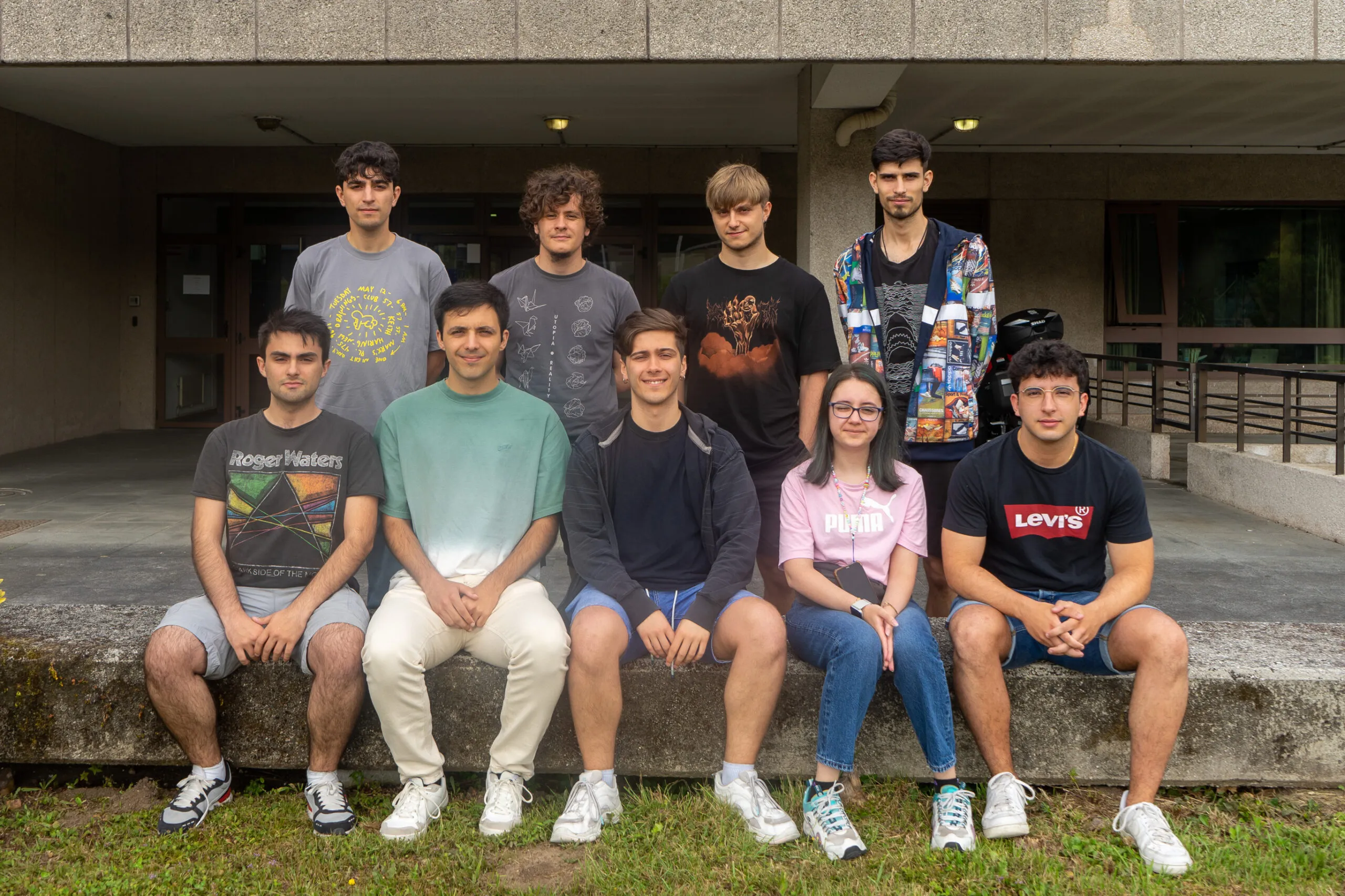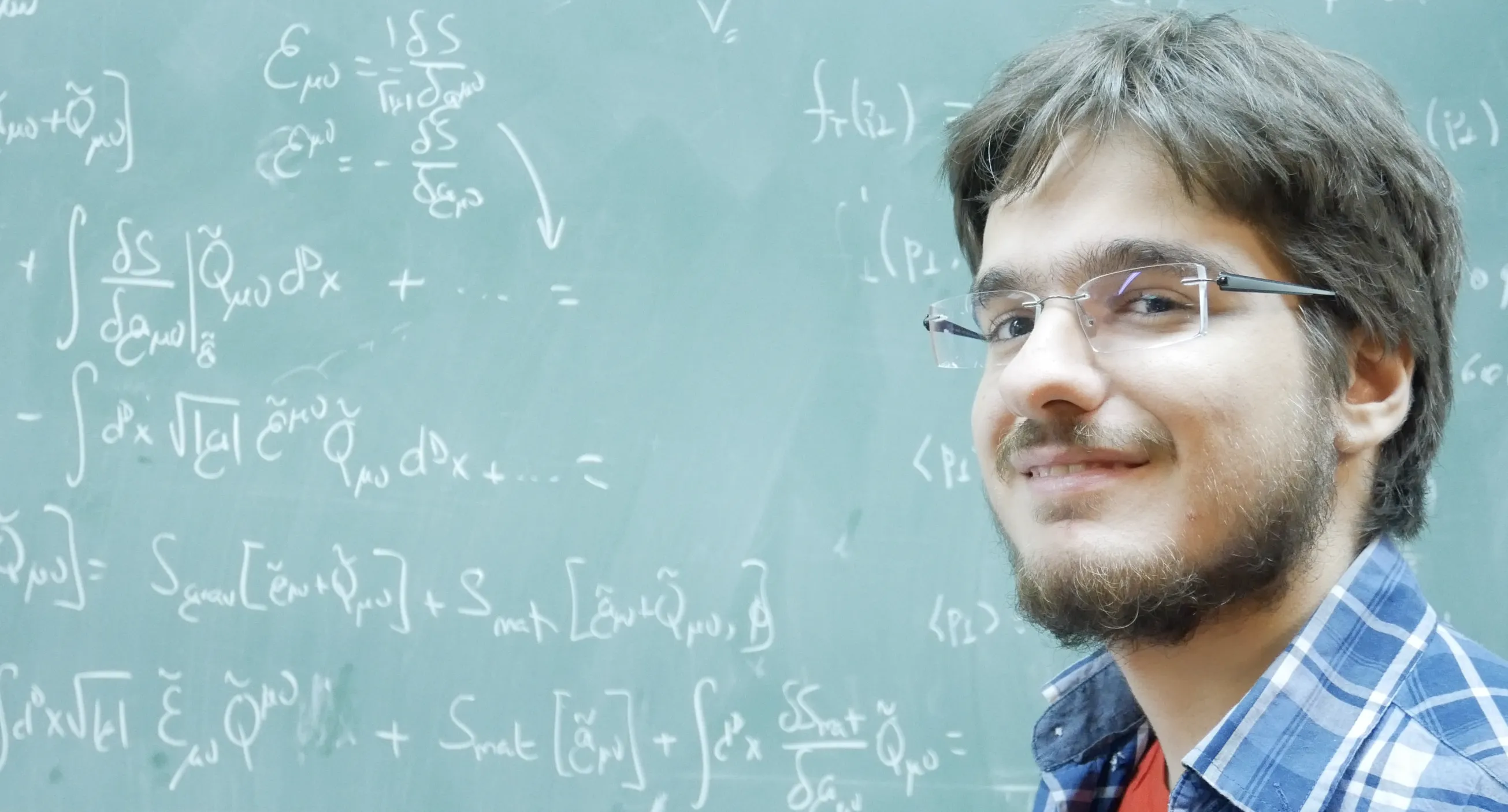Un mes aprendendo no IGFAE: así foi a experiencia do alumnado das Bolsas de Verán



23.09.2019

Andrés Curiel é un dos mozos beneficiarios dunha das 10 bolsas de verán destinadas á investigación que convocou o Instituto Galego de Física de Altas Enerxías (IGFAE). Este estudante cacereño afronta con ilusión un mes de traballo no que desenvolverá as súas aptitudes investigadoras e profesionais. “Cando me decatei de que me seleccionaron púxenme moi contento, foi unha pequena sorpresa ver o meu nome na lista de admitidos”, afirma. Curiel Barroso avanzará no seu proxecto sobre ondas gravitacionais xunto coa axuda de investigadores como Thomas Dent ou Gareth Davies.
Curiel Barroso nunca tivo claro que terminaría dedicando a súa carreira o campo da física ata o bacharelato. Foi nesta etapa onde decidiu embarcarse nun plan de estudo a longo prazo: “Descubrín que a física me achegaba retos cos que se me pasaba o tempo voando”. Namentres, deixouse marabillar por eminencias do terreo como Enrico Fermi. “Foi o arquitecto da era nuclear. De feito, inaugurou unha escola de física nuclear en Italia, a pesar de que nese país aínda non se presentaban grandes avances na física de partículas”, apunta. Tamén bebeu de autores divulgadores como Richard Feynman ou David J. Griffiths, de quen opina que o seu talento para facer a física fácil é unha virtude.
Andrés Curiel considera que o máis atractivo da física é a súa capacidade para explicar os feitos fundamentais da natureza cunha linguaxe precisa e iluminadora. Apaixónanlle os conceptos abstractos que describen aspectos da realidade que non se perciben a primeira ollada, como a interacción entre partículas. Sente gran devoción pola física, tanto é así que a atopa e reflexiona sobre ela a través de aspectos do día a día, como o movemento dunha culler. “Nas instalacións eléctricas, no canto de ver cables e compoñentes electrónicos empezo a pensar nos electróns que co seu movemento son capaces de alimentar eses dispositivos”, engade.
O investigador ocupa gran parte do seu tempo libre en avanzar nas ramas que se tratan de forma superficial nas clases. En terceiro de carreira empezou a interesarse polas actividades extracurriculares. “Tiven a sorte de visitar o detector ATLAS, onde se descubriu ese Bosón de Higgs que deu lugar a un premio nobel, unha experiencia que me animou a seguir facendo actividades deste tipo”, explica.
O taboleiro de anuncios da facultade foi a ponte entre Andrés Curiel e o Instituto Galego de Fisica de Altas Enerxías (IGFAE). Grazas a esa noticia, o estudante trasladouse desde Salamanca, onde realiza os seus estudos, ata Santiago de Compostela. A pesar de todo, Andrés admite adaptarse aos cambios con facilidade e considera esta cidade como un lugar propicio para a investigación. “Aquí estou, vou sacar todo o que poida desta experiencia, sempre con boa cara e con máis intención de aprender que de preocuparse”, adianta o mozo.
O proxecto de Andrés Curiel vai de descifrar mensaxes. Así o define o estudante de forma sinxela. “Por agora estamos a traballar en caracterizar unha información nova que relacionamos con detalles que xa coñecemos e que veñen das mesmas fontes”, matiza. Polo momento indagan en aspectos sobre o posible vínculo de fenómenos como os buracos negros ou as estrelas de neutróns con esta información.
Sobre as súas expectativas, o futuro científico confía en que o Instituto Galego de Física de Altas Enerxías (IGFAE) lle axude a utilizar ferramentas informáticas, algo que, baixo a súa óptica, non se traballa tanto no grao. Ademais, espera que esta experiencia sexa para el determinante á hora de decidir o seu futuro. Ao falar do seu porvir, Andrés Curiel prefire pensar que ten opcións abertas: “A miña intención é manter unha nota media alta e emprender máis experiencias extracurriculares como esta”.